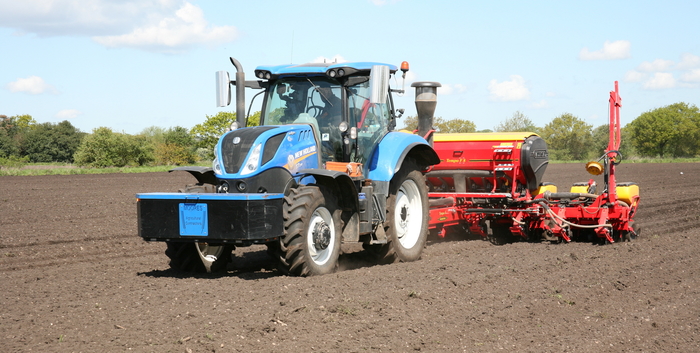The cold and dry conditions in April significantly reduced grass growth. Many farmers were forced to take very early and light cuts of first cut grass silage as fields failed to bulk up as expected. Although recent rain came at the right time for aftermaths and could help improve second cut yields, inevitably many producers will need to plan to offset the consequences of reduced grass silage tonnages
“With commodity and purchased feed prices remaining high, farmers were hoping for a good forage year to help reduced purchased feed costs per litre over the winter,” comments Tim Richmond from LG Seeds. “They will now need to review their stocks and plan to make up the shortfall and maize could be a valuable option in many parts of the country.”
While the recent warmer and wetter weather has been vital for grass growth, it also means soil conditions for drilling maize are ideal. Mr Richmond says soil temperatures are now perfect for maize establishment and the moisture will improve seed to soil contact.
“Maize can be successfully drilled until the end of May and modern early maturing varieties will ensure crops are mature and ready to harvest in time to establish a successor crop. But it will be vital to choose a suitable variety.”
Early maturing varieties require fewer Ontario Heat Units to reach maturity, and Mr Richmond advises selecting varieties which are FAO 160-180. In most parts of the country these can still be established and allow a harvest in good conditions in the autumn.
“While late drilling can shorten the optimum growing season, very early varieties can require 10% fewer heat units and will soon catch up with earlier drilled crops. To help crops get away, we would also advise selecting varieties with good early vigour to ensure the plants quickly establish a good root system and leaf canopy to optimise nutrient uptake from the soil and photosynthetic rates.”
Mr Richmond says modern early maturing maize varieties are also higher yielding than their predecessors. They can produce high dry matter yields of around 16.5-18.3tDM/ha to help make up the forage shortfall.
“Growing 10 hectares of a variety like Trooper which is FAO 170 would be expected to produce around 180 tonnes of dry matter, enough for an additional tonne of dry matter per day for a six-month winter which could be the difference between having enough forage and having to restrict forage intakes,”
He also recommends selecting a variety with high cell wall digestibility. He explains that 50% of the energy is maize is in the vegetative parts of the plant. Increasing the cell wall digestibility makes more energy available to the cow and also helps support rumen function.
“Maize offers the most assured way to increase forage output this year as no other crops will produce such high yields of quality forage in a shortened growing season. Growing maize also provides an opportunity to drill a successor crop for early bite in the spring to further increase forage availability.
“Despite the cold spring we now have the warmth and moisture needed for crops to grow away quickly. This will be particularly important if maize follows grass as a rapidly growing crop will reduce the risk of potential wireworm attack.
“However, if you decide to grow maize make sure to plant an early maturing variety with good early vigour to ensure the crop gets away quickly and will mature in good time.”


